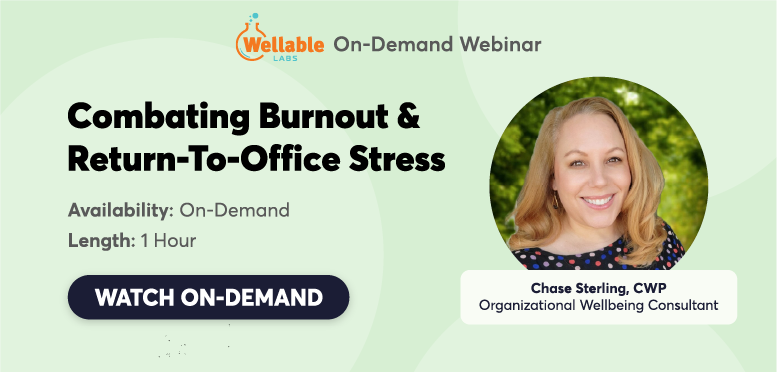From sustained decreases in productivity and engagement to dramatic rises in turnover rates, employers have learned first-hand about the detrimental effects of burnout as the pandemic made workplace stress a chronic issue.

Though the pandemic highlighted the importance of effective anti-burnout strategies, the need for these solutions in the long-term remains strong as we approach its tail end. Years of sustained stress can have lasting effects that may leave employees prone to burnout for the foreseeable future. On top of that, as organizations return to in-person operations, employees will have to adjust to this significant organizational change, which can cause or exacerbate burnout.
While there are several strategies that employees experiencing burnout can utilize to ease its mental and physical symptoms, they are unlikely to succeed without the proper backing from leadership. Despite this, inadequate leadership support for burnout is commonly cited as a barrier to effective burnout prevention and treatment. According to the 2022 Employee Wellness Industry Trends Report, 33% of brokers listed a lack of leadership support as one of the two barriers preventing employers from implementing effective anti-burnout strategies.
To explore the issue further, the report asked insurance brokers how many of their clients have a strong understanding of how well employees are managing chronic work-related stress.
How many of your clients have a strong understanding of how well employees are managing chronic workplace stress?
With just 1% of brokers stating that all their clients have a solid understanding of their employees’ burnout plights and the majority reporting that only some of their clients do, it is reasonable to infer the lack of support for anti-burnout strategies stems, at least in part, from a general lack of awareness.
National Population Health Consultant, Kelly Polinski, offers a clear and straightforward solution. She states:
The first thing to do is ask. Employers can be afraid to ask how employees are doing because there is a presupposition that by asking you are volunteering to provide a solution, and they don’t want that kind of commitment. But by not asking you will never know what you don’t know. So instead, there is a lot of assuming going on, and investment in solutions and strategies that solve for a need that was never there. So don’t assume; ask. And then figure out the rest based on what you learn.
Organizational Well-Being Consultant, Chase Sterling, emphasizes the importance of asking in the “right away,” as employees may be reluctant to discuss their problems managing chronic job stress directly with leaders in their organization. To obtain honest and actionable feedback, Sterling suggests that employers should use “evidence-based anonymized surveys to provide employees with the psychological safety needed to discuss their burnout struggles comfortably.”
As Polinski notes, a lack of understanding can lead to suboptimal or incomplete benefits strategies. While the solutions that organizations are relying heavily on are effective, including mental health resources (86%), flexible work schedules (73%), and engagement activities (32%), other critical benefits are not being utilized as frequently as they should be.
What steps are your clients most frequently implementing to prevent and mitigate employee burnout (choose top 3)?
Polinski highlights the importance of autonomy and workload adjustments, listed by 3% and 10% of brokers, respectively. She states:
To prevent burnout, employees need to feel connected and in control. A supervisor who wants to ensure an employee is on top of their work and not overloaded runs the risk of checking in to the point of micro-managing. Instead, a manager should be offering context, asking about workload, and continually revisiting overall goals and objectives, both for the organization and the individual.
These suggestions are not only intuitive, they are also backed by science. Studies have found that workload and autonomy are two of the top factors influencing employee burnout, further cementing job autonomy and workload adjustments as essential components of comprehensive anti-burnout strategies. When elaborating on the importance of job autonomy and workload adjustments, Polinski highlights the need for leadership training, stating:
A manager or supervisor who can do [this] well is worth their weight in gold. So, employers should also be focusing on developing their managers as a burnout mitigation strategy.
According to Sterling, these leaderships trainings should focus heavily on corporate culture, especially norms for communication and messaging.
Often, managers are what’s driving cultural norms that cause burnout. By sending messages after hours, leaders establish this as a norm that employees should abide by. Over time, this habit can spread from the top down and throughout the organization, making it difficult for all employees to step away from work at the end of the day.
Takeaway
Burnout mitigation is just as critical now as it was in the thick of the pandemic. As employees continue to deal with novel organizational challenges, companies must continue to refine their anti-burnout strategies by increasing their burnout awareness and utilizing solutions that target burnout’s primary causes.












